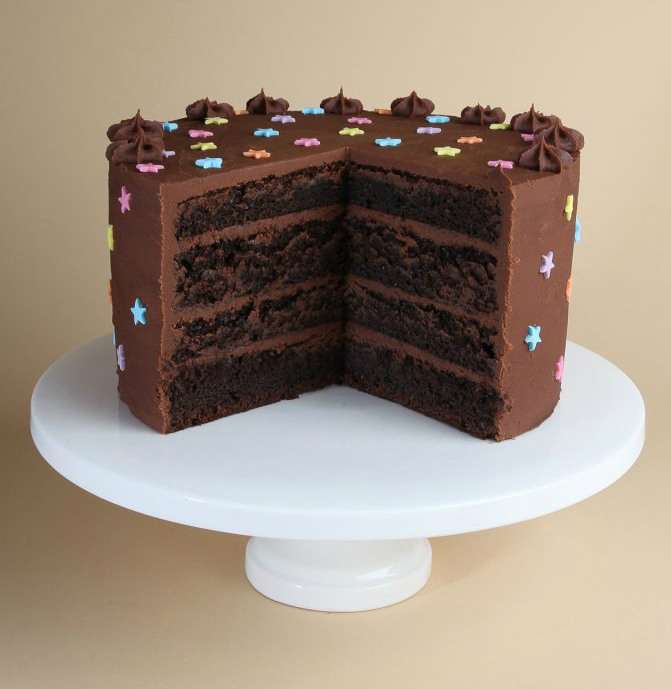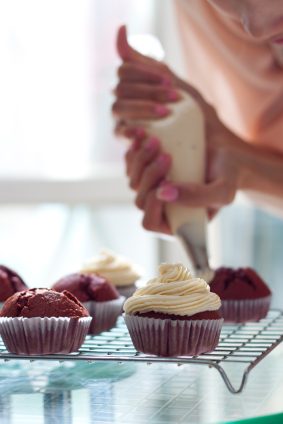5 steps to baking the perfect cake
Robin
Cakes hold a special place in all our hearts. The sweet, indulgent taste makes every celebration, from birthdays to weddings, feel extra special. But many home bakers find themselves disappointed with dry, bland homemade cakes that just don’t live up to their bakery counterparts. As experienced bakers, we’ve put together our top tips for creating a delicious cake and achieving that all-important tender crumb and sweet flavour.
Preheat your Oven
Preheating the oven is one of the most important, and often overlooked, steps when baking cakes. Failing to properly preheat can lead to major problems like uneven rising, dry edges or uncooked centres. For best results, you’ll want to make sure your oven thermometer is properly calibrated, as many ovens run slightly hot or cold. Give your oven plenty of time to fully preheat – most ovens need 15-30 minutes to reach the set baking temperature.
Always double check that you have the oven set to the exact temperature stated in the recipe – even 25 degrees off can require adjusting cooking times. With proper oven preheating, you can have confidence your cake will bake uniformly from edge to centre and achieve that light, tender texture characteristic of cakes.
Select the Perfect Tin
The cake tin you choose affects the final shape, texture and structure of your celebration cake. Using the wrong type of tin can lead to uneven cooking, burnt edges and crumbling layers. When selecting cake tins, opt for smooth metal tins without scratch marks, which makes it easier to release the cake when it’s done, and make sure you’re following the recipe if it states a specific size.
For shaping, round, square and rectangular cake tins all work very well. Round tins deliver the most even heat distribution for baking layered cakes, while square or rectangular tins are a great choice for sheet cakes. You also need to properly prepare whatever pan you select by greasing thoroughly with butter or oil and dusting with flour or cocoa powder. You can also line the bottoms with parchment paper for fool-proof release.
Follow the Recipe for Ingredient Temperatures
Many cake recipes specify that ingredients like eggs, milk, butter should be at room temperature or chilled. It’s important to follow these temperature instructions closely for ideal results. Room temperature ingredients promote even mixing and structure development.
On the other hand, some recipes ask for chilled ingredients, especially those containing perishable dairy like cream cheese buttercreams. Cold ingredients help prevent premature melting and runniness in icings that need to hold their structure. Always check your recipe and plan ahead. If eggs need time to warm up, take them out up to an hour before baking. Similarly, chill ingredients that call for it at least 2 hours in the fridge before preparing the recipe.
Mix Thoroughly
The way you mix up the cake batter can make or break the final cake texture. For best results, start by whisking together all the dry ingredients like flour, baking powder, salt and sugar in one bowl. In a separate bowl, mix the wet ingredients like eggs, oil, milk and vanilla. Then, slowly pour the wet ingredients into the dry ingredients and very gently fold the batter together using a spatula or wooden spoon.
It’s important not to over mix the batter, as this can overdevelop the gluten and result in a dense, rubbery cake – gentle mixing promotes lift and creates a fluffy crumb. Finally, delicately fold in any mix-ins like chocolate chips or nuts at the very end, being careful not to deflate the batter.

Let Your Cakes Cool Completely
It can be extremely tempting to ice your cake while it’s still warm from the oven. But this is actually a big baking mistake that can ruin your icing texture and decoration. Properly cooling cakes before applying any decoration is essential for achieving a perfectly coated finish.
Warm cakes will cause icing, fondant or frosting to melt, slide and drizzle down the sides rather than staying put. The residual heat from a fresh baked cake also prevents icing flavours from fully developing and can create condensation under the icing, affecting the decoration. Having patience allows cakes to completely set their structure and form so they provide a solid, stable base for icing.
Baking the perfect cake from scratch is incredibly rewarding, but also requires care and precision when following recipe steps. While it does take effort, mastering basic cake techniques truly pays off with gorgeous, tasty results.
Next time you need a show-stopping cake for a special occasion, save yourself the hassle and let the experts at Cakes by Robin handle it. With years of experience, we create bespoke cakes that are as beautiful as they are delicious. Get in touch today to order your custom cake masterpiece.
Categories
- Birthday Cakes
- Cake Recipes
- Celebrity Cakes
- Children's Cakes
- Children's party styling
- Christening Cakes
- Christmas Cakes
- Cookies
- Corporate Cakes
- Corporate Cookies
- Cupcakes
- Custom Dessert Tables
- Dessert tables
- Easter Cakes
- Florists
- Great British Bake Off
- London Cakes
- Miscellaneous
- No fondant Cakes
- Recommendations
- Specialist Cakes
- Themed Cakes
- Wedding Cakes
- Wedding Services
- Weddings

